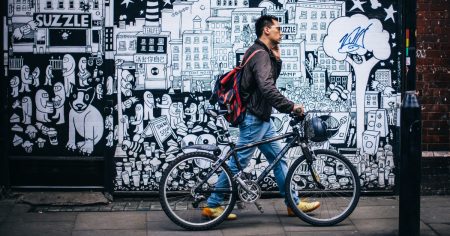
A recently published study, conducted with students and staff members of Pennsylvania State University (Penn State), found that people tend to overestimate the time it takes to walk or cycle to their destination. The issue is that the perceived travel time is often pointed out as one of the barriers to choosing these types of active transport!
As reported by the NY Times, students and staff members of Penn State were asked to complete a questionnaire about their commuting patterns, fitness levels, barriers to active transport mode, as well as demographics and place of residency information. The researchers used Google Maps to ask respondents to record their home address and their destination at the university and to calculate the actual travel time between those points.
It was observed that 90% of the faculty and staff members overestimated the active transport travel time adding at least 10min to the actual time. The study pointed out that respondents who frequently walked or cycled were more accurate in comparison to Google Map’s estimates. Not surprisingly, only a few of the faculty and staff members walked or cycled to work.
Additionally, those living closer to the campus were also better in assessing travel times. Other factors influencing the overestimation of active travel time included having a parking permit and the lack of experience in cycling.
This study indicates that people need to familiarise themselves with the time and effort needed to walk or cycle from point A to point B to reduce the barriers to active transport modes. Additionally, it points out that organisations interested in promoting active transport modes should consider demystifying the time it takes to walk or cycle from staff’s home to work by publishing time estimates or promoting walk or cycle to work days.
Related posts:
Where are the cyclists and pedestrians?
Safer infrastructure key to cycling uptake
Cycling uptake, safety and social equality
